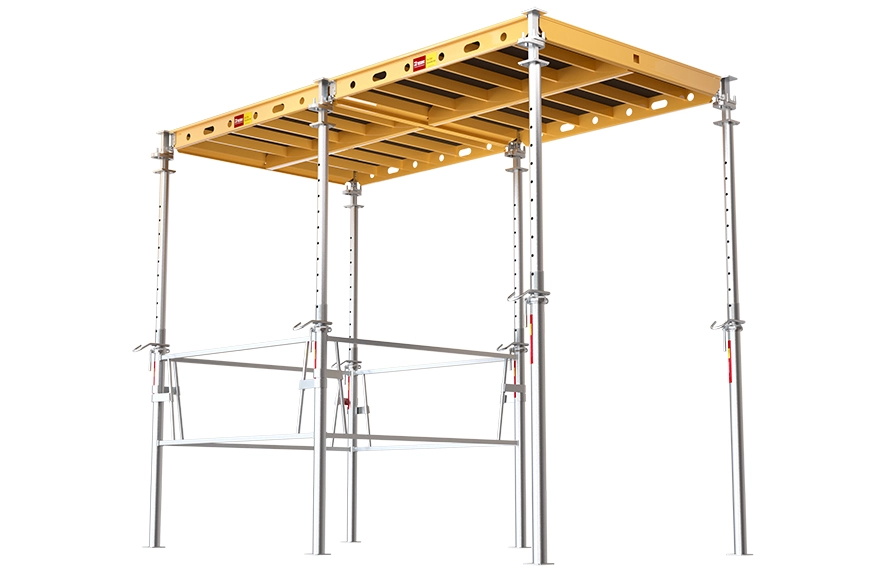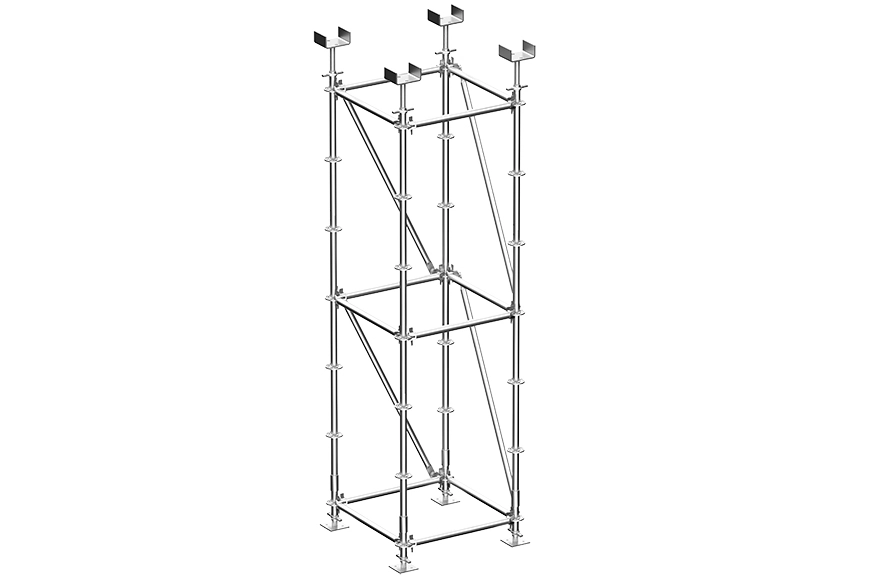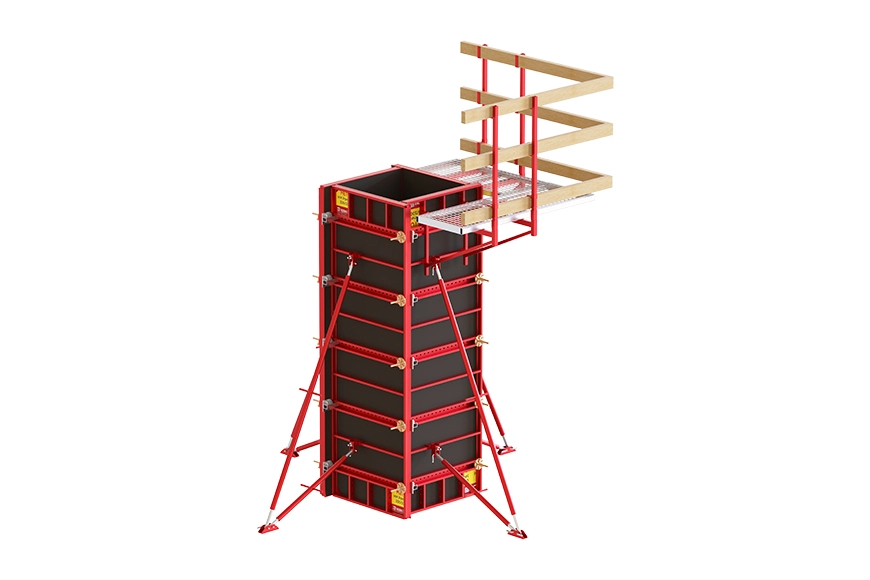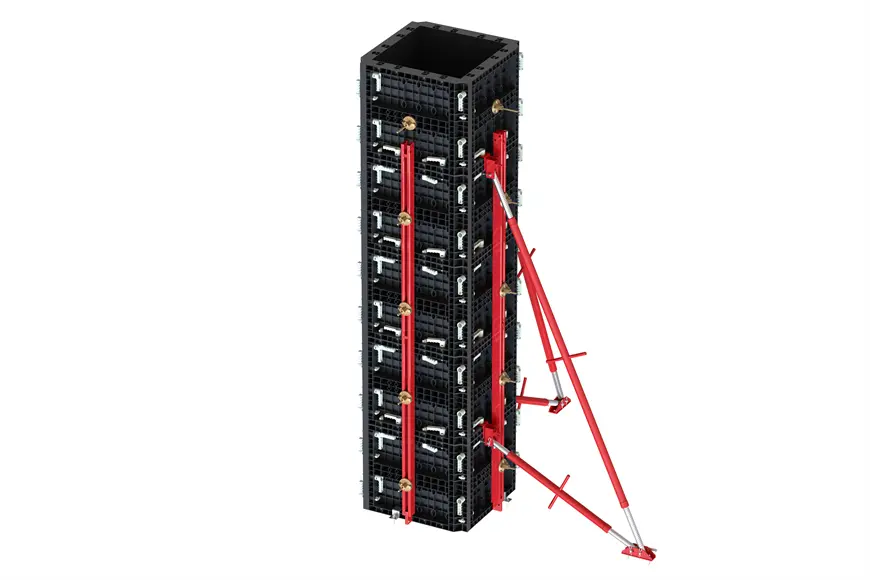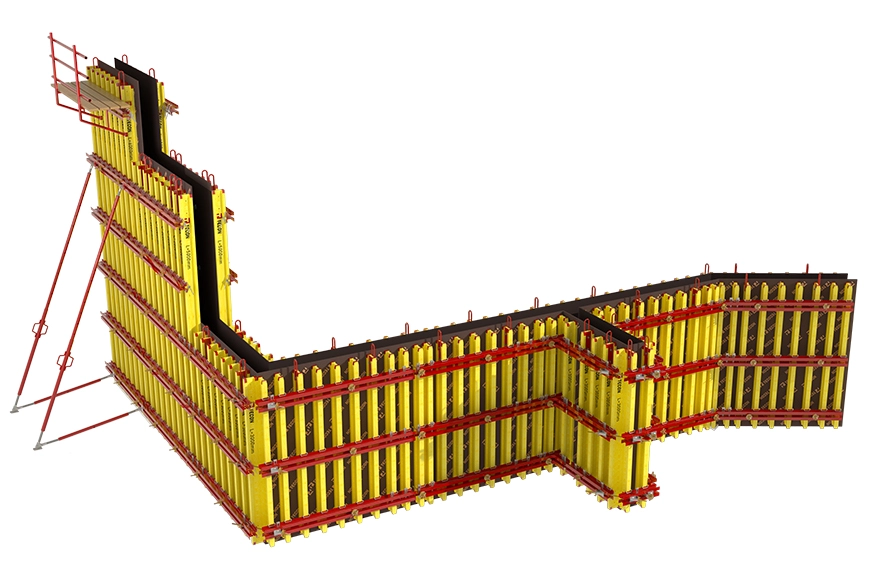1. The shape, size and mutual position of the components of bridge formwork should be correct.
2. The bridge formwork should have sufficient strength, stiffness and stability to withstand the weight and lateral pressure of newly poured concrete, as well as various construction loads.
3. The bridge formwork should be simple in structure, easy to assemble and disassemble, and does not hinder the binding of steel bars, so as to ensure that there is no leakage of grout during concrete pouring.
4. For the prepared bridge formwork, general-purpose and large-block formwork should be selected first, so that there will be less variety and quantity, and the amount of wood formwork inlays is small. In order to reduce the drilling loss of the steel formwork, you can set up the formwork of split bolts. And you can also use 55mmx100mm wrot square wood instead of the bolt.
5. The lengthwise splicing of bridge formwork should be staggered to increase the overall rigidity of the formwork.
6. The support system of the bridge formwork should be arranged according to the load of the formwork and the stiffness of the components.
7. The matching bridge formwork should be designed according to the layout drawing, indicating the location, specification, model and quantity of the steel formwork. The pre-assembled large formwork should be demarcated. The position of the embedded body and the reserved hole shall be marked on the layout drawing, and the fixing method shall be indicated.
1. Construction safety of the bridge formwork
The construction safety of bridge formwork is very important. The danger sources of bridge formwork are as follows:
(1) Bridge formwork may collapse: bridge formwork collapses due to weak assembly or unstable foundation, causing injury or loss to people or machinery.
(2) Object strike: the operator below the bridge formwork suffers personal injury caused by falling objects from a high place above the formwork.
(3) Falling from a height: the operator above the bridge formwork is injured due to improper safety measures (such as not wearing seat belts) or temporary safety measures that are not complete.
2. Method of removing the bridge formwork
(1) The sequence of dismantling bridge formwork is generally the non-load-bearing formwork first, then the load-bearing formwork. Then remove the side formwork first and then the bottom formwork. Removal order of frame structure template: column → beam side formwork → cast-in-place formwork → beam bottom formwork.
(2) It is strictly forbidden to use a sledgehammer and a crowbar to smash and pry the bridge formwork when removing the formwork.
(3) When removing the bridge formwork, the staff should stand in a safe place. Only after the section of the formwork is completely dismantled, can the stacked formwork, accessories, brackets, etc. be shipped out.
(4) It is strictly forbidden to throw away the dismantled bridge formwork, accessories, etc. They should be stacked in the designated location, and cleaned up, repaired and coated with isolation agent in time, and sorted and piled up for use in the future.
(5) If it is found that there is a quality problem that affects the safety of the structure during the process, the removal should be suspended, and the removal can be continued after the problem is solved.
(6) After the formwork is removed and the formwork seam tape is cleaned by the woodworker, if you found that there is a little mortar at the formwork seam and the bottom of the formwork, you should be ground with an angle grinder.

